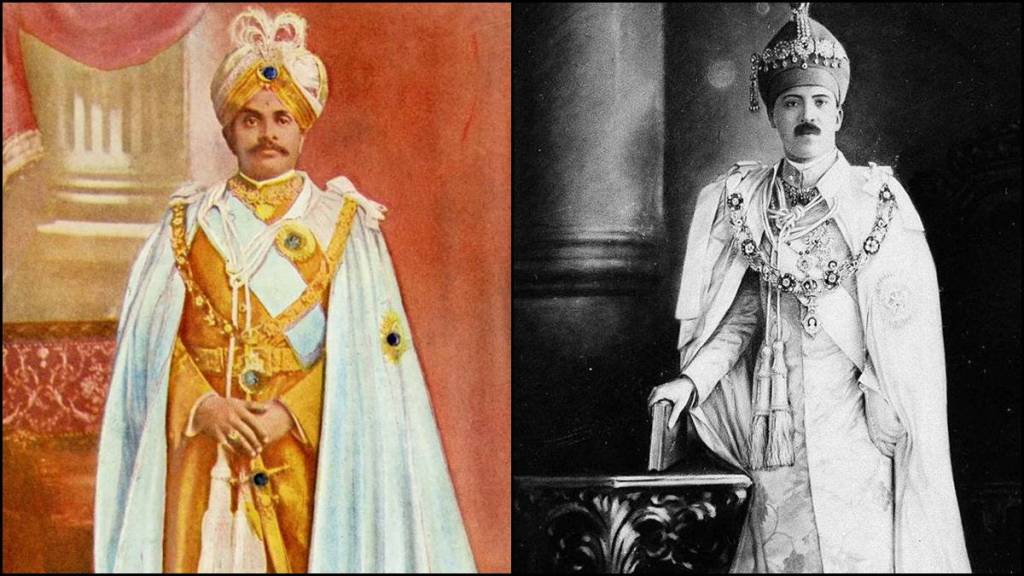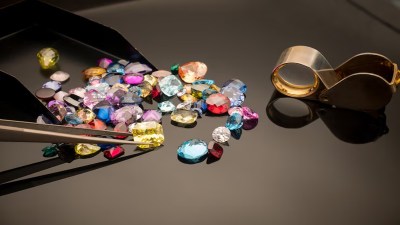In the annals of history, Mir Osman Ali Khan, the 7th Nizam of Hyderabad, held the title of the “richest man in the world” as proclaimed by TIME Magazine in 1937. With a colossal net worth of $236 billion (Rs 18 lakh 68 thousand Crores), Khan’s opulence was exemplified by the use of a rare Jacob diamond, valued at Rs 1000 crores, as a paperweight, and a garage adorned with 50 Rolls-Royce cars, including the prestigious Silver Ghost Throne Car.
Yet, another prominent figure in this era of grandeur was an Indian Maharaja whose net worth, adjusted for inflation, amounted to $400 million ($7 billion). Maharaja Krishnaraja Wadiyar IV, the 24th ruler of the former princely state of Mysore, secured the position of the second wealthiest Indian in the 1930s global rich list, equivalent to approximately Rs 57,901 crores.

Born to Maharaja Chamarajendra Wadiyar X and Maharani Vani Vilas Sannidhana on June 4, 1884, in the Mysore Palace, Krishnaraja Wadiyar IV’s early education encompassed a diverse range of subjects, including Western studies, Kannada, Sanskrit, Indian and Western classical music, and horse riding. Under the guidance of P. Raghavendra Rao and Sir Stuart Fraser of the Bombay Civil Service, he acquired a comprehensive education, preparing him for the responsibilities that lay ahead.
Ascending to the throne at the tender age of 11, Krishnaraja Wadiyar IV was declared the king of Mysore, with his mother, Maharani Vani Vilas, serving as Regent until he reached the age of 18 in 1902. His reign, described as the “golden age” of Mysore spanning from 1902 to 1940, witnessed remarkable strides in administrative, educational, and social development.

Under Krishnaraja Wadiyar IV’s visionary leadership, Mysore experienced a transformative era. He instituted progressive policies, criminalizing untouchability and banning child marriage for girls under eight. The Maharaja established scholarships for widowed girls and women, contributed Rs 60 lakhs annually from his net worth to physically disabled children, and formed the Mysore Social Progress Association in 1915 to uplift the weaker sections of society.
A trailblazer in industrial development, Krishnaraja Wadiyar IV pioneered the production of hydroelectric power in Asia, making Mysore the first Indian state to achieve this milestone. In 1905, Bangalore became the inaugural Asian city to receive electricity. The Maharaja’s commitment to education was evident as he increased the state’s education budget from Rs 699,000 in 1902 to Rs 4,680,000 in 1927, resulting in 8,000 schools with 515,000 pupils in Mysore.
Krishnaraja Wadiyar IV’s cultural and artistic patronage earned him the title of ‘Rajarshi’ (Raja and Rishi) bestowed by Mahatma Gandhi. His passion for the fine arts extended to supporting Hindustani, Carnatic, and Western artists, as well as sponsoring legendary yoga teacher Sri T. Krishnamacharya. Despite his profound contributions to the state, the Maharaja also found solace in leisurely pursuits such as music, playing a myriad of instruments, and composing poems in Kannada.

The Maharaja’s monumental projects, including dams and reservoirs constructed between 1923 and 1939, showcased his commitment to infrastructure development. Funding the Krishna Raja Sagar project by selling precious gems and stones from his private collection in Mumbai, Krishnaraja Wadiyar IV demonstrated resourcefulness in achieving his vision.
While specific details about his extensive assets, from royal jewels to the historic Mysore Palace, remain limited, Krishnaraja Wadiyar IV’s legacy endures as one of the wealthiest individuals of his time, with a net worth of Rs. 57,901 Crores at the time of his passing in 1940.









